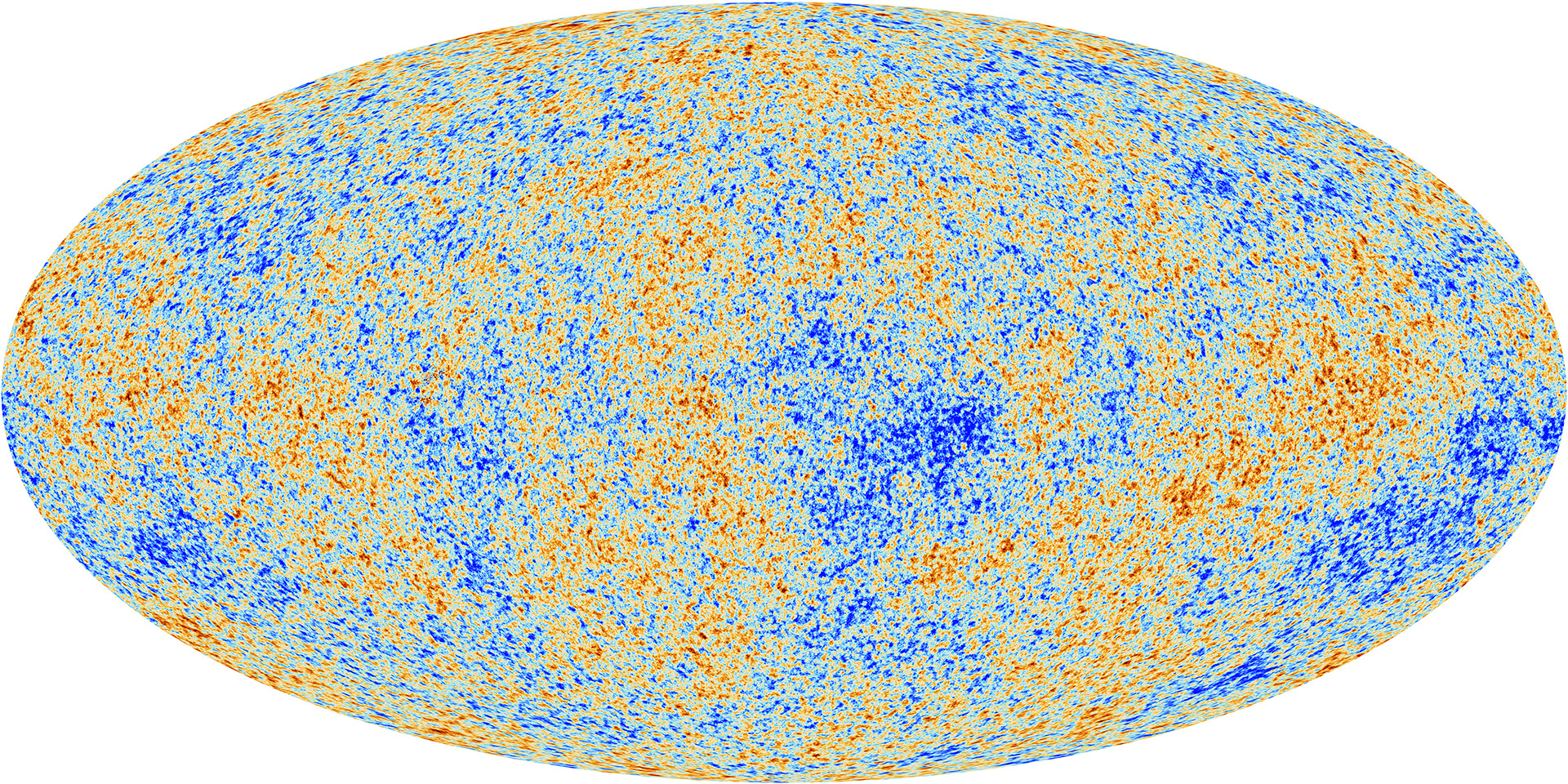Let's extrapolate backwards. If the universe is
expanding, and has a finite age, if we run it backwards we must come to
a point in the
Universe's history when it was very dense and
very
hot (this was referred to, deridingly, by Fred Hoyle as the "Big
Bang").
In such a hot, dense universe, the mean free path of photons is small, so energy cannot be radiated away. The particles and photons are thermalized, and produce a black body spectrum. The early universe was a hot black body characterized by a temperature T. As the Universe expands and cools, this blackbody radiation maintains it spectral shape, but has a characteristic temperature T ~ 1/R
In the late 1940s and early 1950s, George Gamov suggested that the elements in the Universe were "cooked" via nuclear reactions in the hot Big Bang. Later, Gamov and Alpher showed that actually the Big Bang could not create all the elements, but that the lighter elements, helium in particular, could have formed in this way.
Important constraint: To make Helium this way, the temperature must have been 109 K and the densities ~ 10-5 g/cm3. (note: higher temps and lower densities than in the Sun).
Since density scales as R-3, we can estimate the scale factor of the Universe when this happened (if we have an estimate of the current baryonic density). Since

Since this happened at T=109, and the radiation cools like 1/R, we should have radiation running around the universe with a characteristic temperature of

This peaks in the microwave portion of the spectrum.
| Gamov and Herman predicted the
Universe should be glowing in microwaves. Sixteen years later, in 1964, unaware of the cosmological predictions, Penzias and Wilson discovered a persistant "hiss" in their radio antennae used to communicate with the Telstar satellite. The cosmic microwave background radiation (CMB) had been detected! |
 |
(courtesy the Cosmic Background
Explorer
Satellite)

COBE temperature map (+/- 0.001 K)

COBE temperature map at very high contrast (+/-
0.00001
K; dipole removed)

And, most recently, observations by the Planck satellite:

We are seeing light from the Universe when it was very
old.
Remember, in the hot, dense Universe, the mean free path of photons was
small
-- they couldn't travel very far. The reason is that they were
scattering
of free electrons (Thomson scattering
). As soon as there were no free electrons, the photons could travel
and
we could "see" -- the Universe became
transparent
. This happens when the Universe was cool enough that protons and
electrons could combine, and we call this point in history "recombination".
When we look at the CMB, we are seeing the Universe as it was at recombination, when all those photons could travel freely so that we can detect them.
When did this happen? At a temperature of ~ 4000 K, which is a redshift of ~ 1000, or a time of ~ few hundred thousand years after the Big Bang.
The fluctuations we see in
temperature are related to the fluctuations in mass. These fluctuations
will grow with time to form
the galaxies and galaxy clusters that we see and live in today!

| Parameter |
Value |
| H0 |
67.8 km/s/Mpc |
| OmegaM |
0.308 |
| Omega |
1.000 |
| Omegabaryon |
0.0484 |
| t0 |
13.8 Gyr |